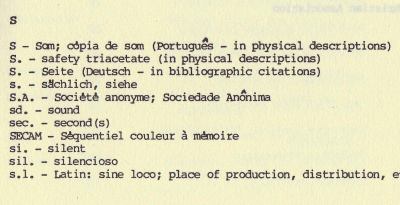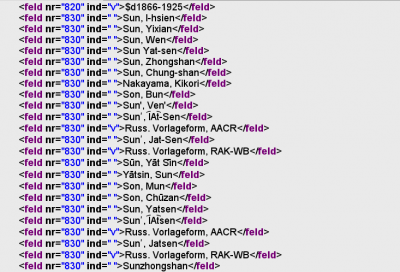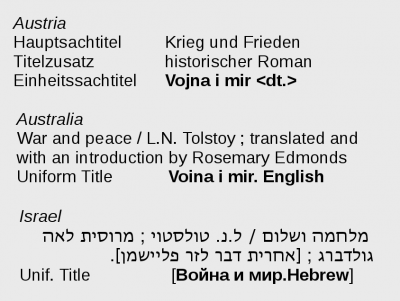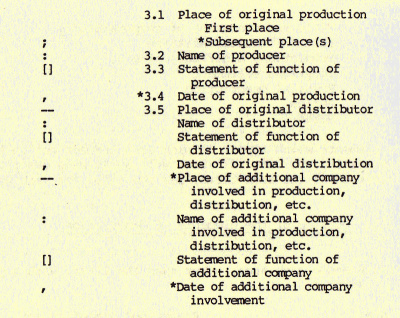From the TC 372 Workshop Compendium
Why some conventions are more useful than others
This is a classic domain of cataloguing rules. Many of the conventions laid down in compendia such as the AACR can be expected to remain useful in the future. Some, however have turned out to be less adequate for an all-digital, networked information environment.

From: FIAF Cataloguing Rules for Film Archives, 1991, p.215.
|
Abbreviations were useful for paper-based information. Restrictions in the length of text no longer count in a digital environment.
Although many abbreviations can be disambiguated through the context, this context is often lost in systems where information can be mixed and matched in arbitrary ways.
|

From: Deutsche Nationalbibliothek - Personennormdatei (PND)
|
The Unicode standard was defined in 1984. It took about two decades before most everyday software applications were able to use it. In the meantime, enormous effort was spent on converting character sets from one to another.
This is a person record for 孙逸仙. While many of the Latin variants are actually in use, the Russian spelling (Сунь Ятсен) is rendered in Latin script four times using different transliteration schemes.
Many transliteration schemes are unidirectional, i.e. the original spelling cannot be reliably inferred from the transliterated form.
|

From searches via gateway: http://www.ubka.uni-karlsruhe.de/kvk.html
|
Rules for uniform titles and for preferred names have been developed in the context of national bibliographic systems. When used internationally, these concepts become meaningless since each language community can (and often does) have its own preferences.
Moreover, databases can provide users with an unlimited number of access points which means that these do not have to be determined in advance.
Where a uniform title serves the purpose of identifying a work existing in many manifestations, it corresponds to the identifying title in EN 15907.
|

From: FIAF Cataloguing Rules for Film Archives, 1991, p.4.
|
Punctuation rules such as the ones adapted from ISBD by the FIAF Cataloguing Commission were adequate for situations in which encoding and display syntax were inseparable.
Using display-independent encodings such as in MARC or in XML or RDF-based metadata schemas, display formats can be generated as required for a particular purpose or audience.
Note that MARC is actually a hybrid encoding in that it allows punctuation syntax to occur within some tagged elements.
|



